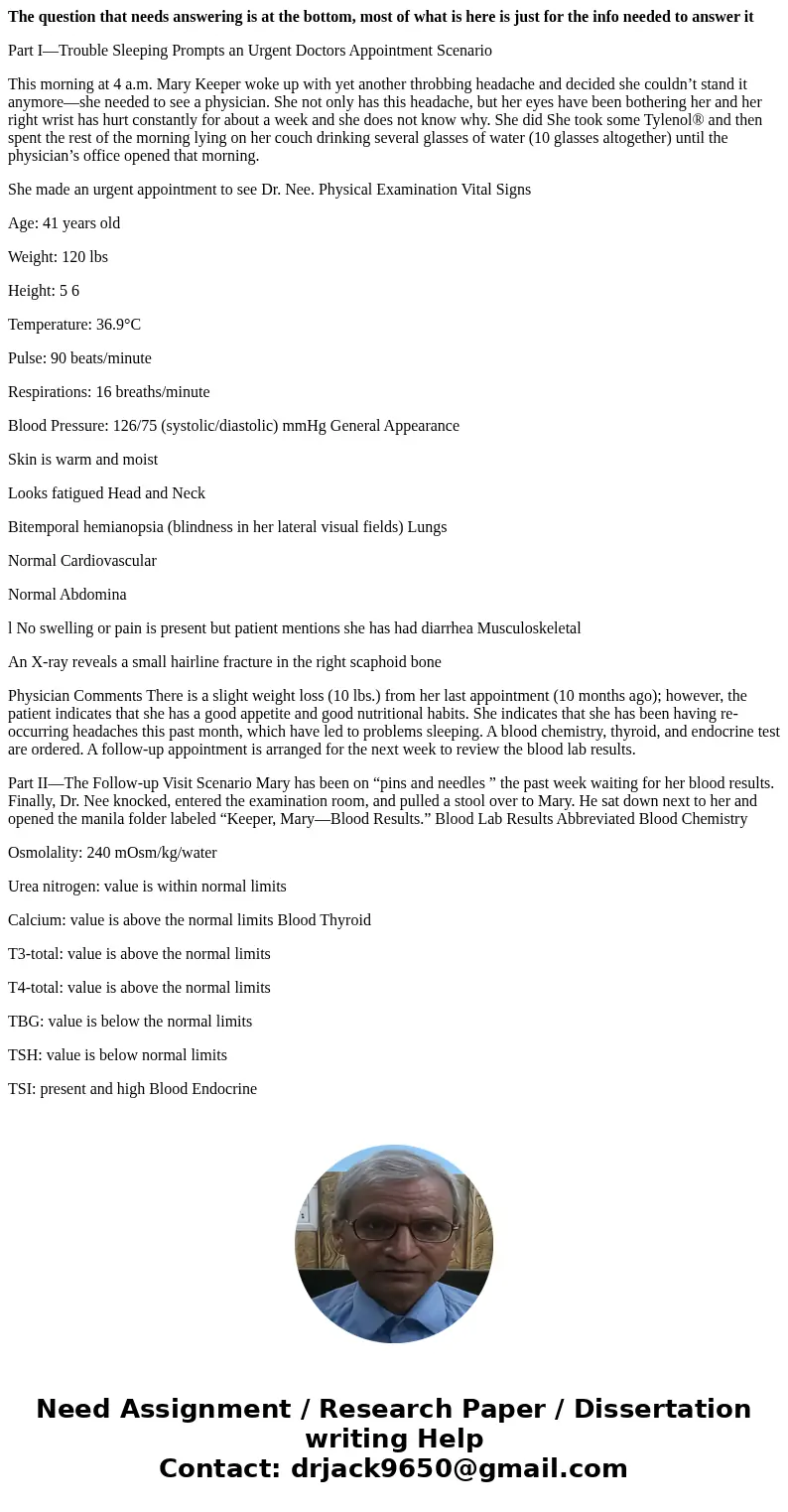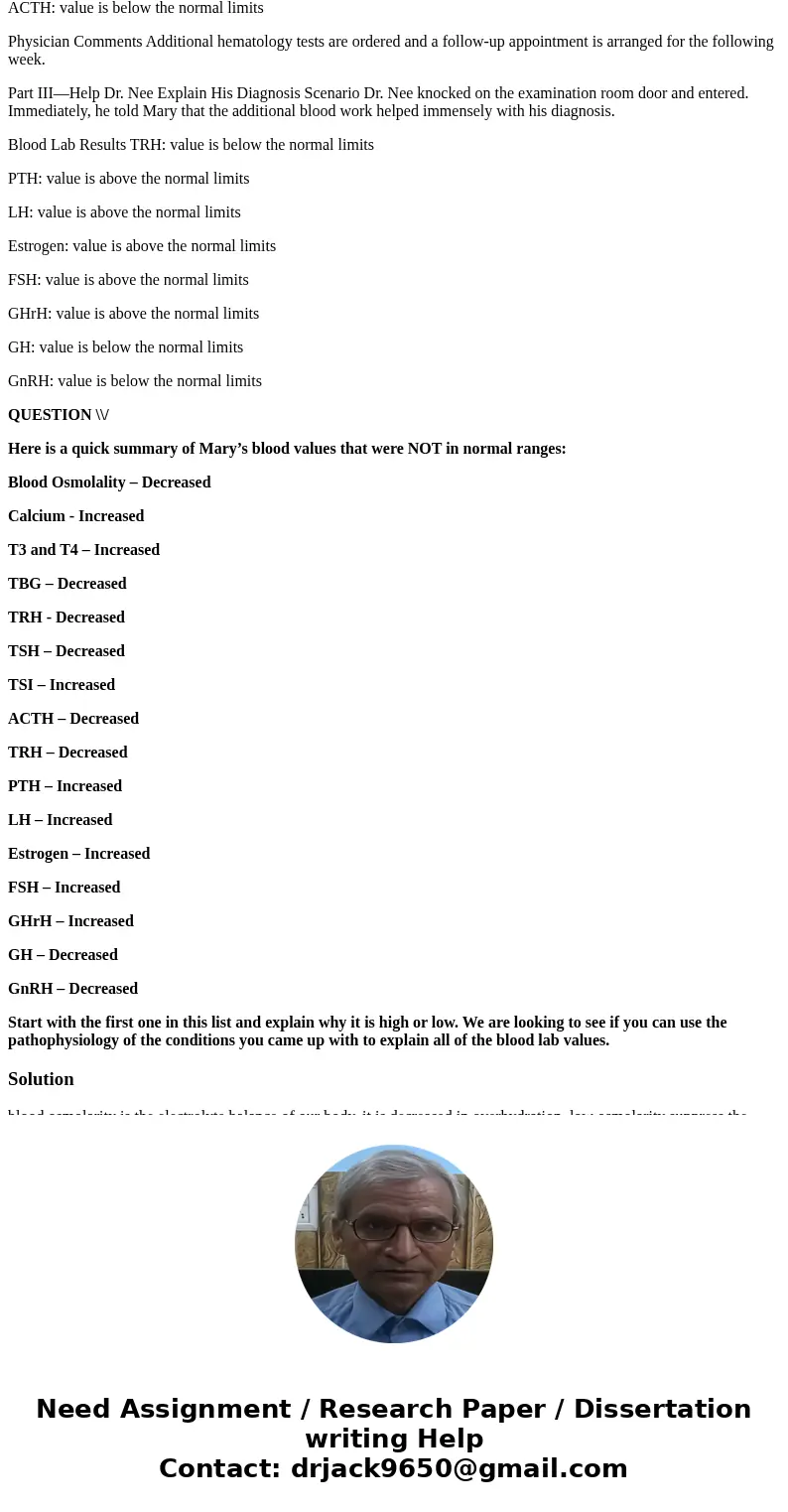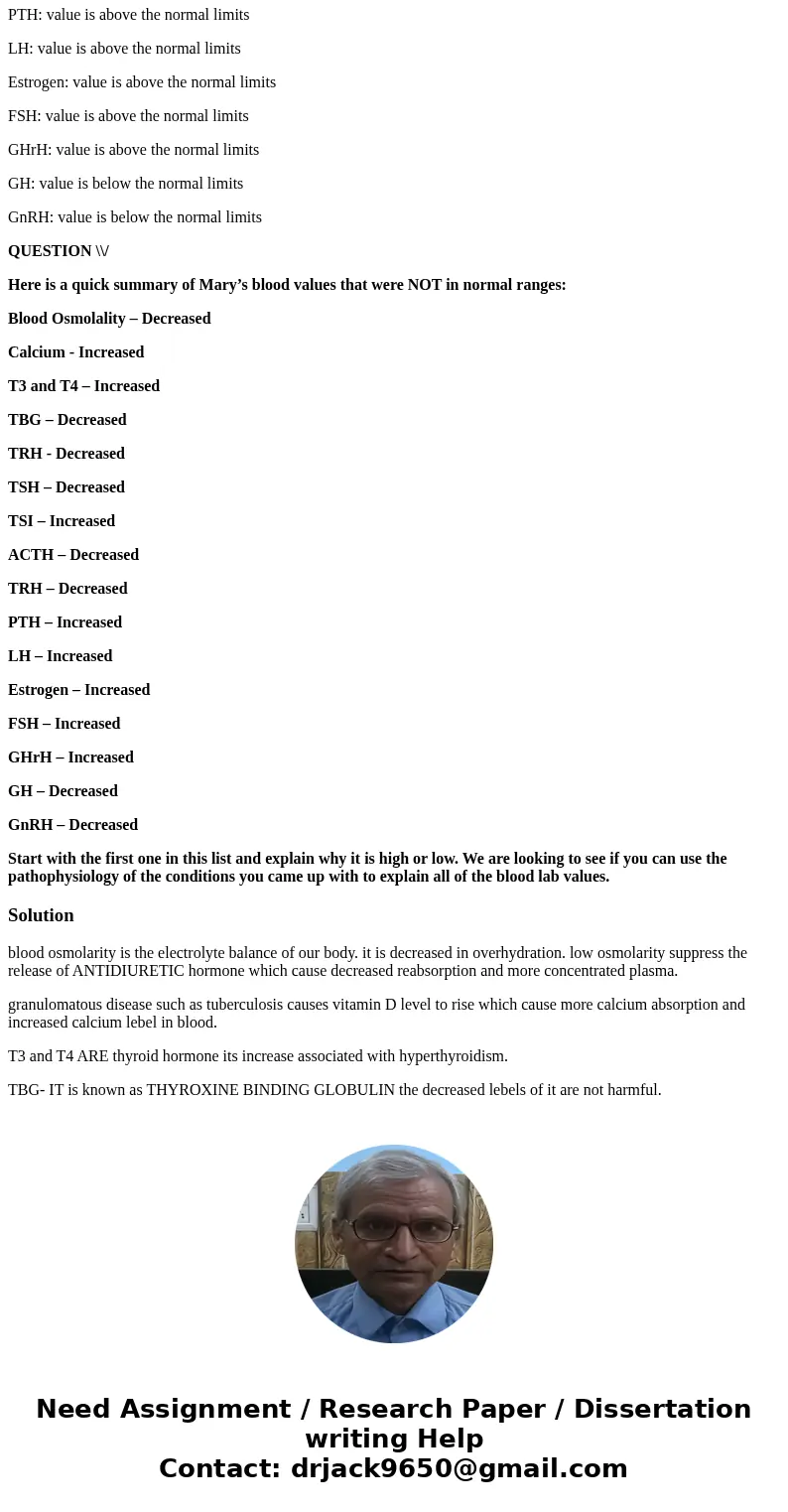The question that needs answering is at the bottom most of w
The question that needs answering is at the bottom, most of what is here is just for the info needed to answer it
Part I—Trouble Sleeping Prompts an Urgent Doctors Appointment Scenario
This morning at 4 a.m. Mary Keeper woke up with yet another throbbing headache and decided she couldn’t stand it anymore—she needed to see a physician. She not only has this headache, but her eyes have been bothering her and her right wrist has hurt constantly for about a week and she does not know why. She did She took some Tylenol® and then spent the rest of the morning lying on her couch drinking several glasses of water (10 glasses altogether) until the physician’s office opened that morning.
She made an urgent appointment to see Dr. Nee. Physical Examination Vital Signs
Age: 41 years old
Weight: 120 lbs
Height: 5 6
Temperature: 36.9°C
Pulse: 90 beats/minute
Respirations: 16 breaths/minute
Blood Pressure: 126/75 (systolic/diastolic) mmHg General Appearance
Skin is warm and moist
Looks fatigued Head and Neck
Bitemporal hemianopsia (blindness in her lateral visual fields) Lungs
Normal Cardiovascular
Normal Abdomina
l No swelling or pain is present but patient mentions she has had diarrhea Musculoskeletal
An X-ray reveals a small hairline fracture in the right scaphoid bone
Physician Comments There is a slight weight loss (10 lbs.) from her last appointment (10 months ago); however, the patient indicates that she has a good appetite and good nutritional habits. She indicates that she has been having re-occurring headaches this past month, which have led to problems sleeping. A blood chemistry, thyroid, and endocrine test are ordered. A follow-up appointment is arranged for the next week to review the blood lab results.
Part II—The Follow-up Visit Scenario Mary has been on “pins and needles ” the past week waiting for her blood results. Finally, Dr. Nee knocked, entered the examination room, and pulled a stool over to Mary. He sat down next to her and opened the manila folder labeled “Keeper, Mary—Blood Results.” Blood Lab Results Abbreviated Blood Chemistry
Osmolality: 240 mOsm/kg/water
Urea nitrogen: value is within normal limits
Calcium: value is above the normal limits Blood Thyroid
T3-total: value is above the normal limits
T4-total: value is above the normal limits
TBG: value is below the normal limits
TSH: value is below normal limits
TSI: present and high Blood Endocrine
ACTH: value is below the normal limits
Physician Comments Additional hematology tests are ordered and a follow-up appointment is arranged for the following week.
Part III—Help Dr. Nee Explain His Diagnosis Scenario Dr. Nee knocked on the examination room door and entered. Immediately, he told Mary that the additional blood work helped immensely with his diagnosis.
Blood Lab Results TRH: value is below the normal limits
PTH: value is above the normal limits
LH: value is above the normal limits
Estrogen: value is above the normal limits
FSH: value is above the normal limits
GHrH: value is above the normal limits
GH: value is below the normal limits
GnRH: value is below the normal limits
QUESTION \\/
Here is a quick summary of Mary’s blood values that were NOT in normal ranges:
Blood Osmolality – Decreased
Calcium - Increased
T3 and T4 – Increased
TBG – Decreased
TRH - Decreased
TSH – Decreased
TSI – Increased
ACTH – Decreased
TRH – Decreased
PTH – Increased
LH – Increased
Estrogen – Increased
FSH – Increased
GHrH – Increased
GH – Decreased
GnRH – Decreased
Start with the first one in this list and explain why it is high or low. We are looking to see if you can use the pathophysiology of the conditions you came up with to explain all of the blood lab values.
Solution
blood osmolarity is the electrolyte balance of our body. it is decreased in overhydration. low osmolarity suppress the release of ANTIDIURETIC hormone which cause decreased reabsorption and more concentrated plasma.
granulomatous disease such as tuberculosis causes vitamin D level to rise which cause more calcium absorption and increased calcium lebel in blood.
T3 and T4 ARE thyroid hormone its increase associated with hyperthyroidism.
TBG- IT is known as THYROXINE BINDING GLOBULIN the decreased lebels of it are not harmful.



 Homework Sourse
Homework Sourse